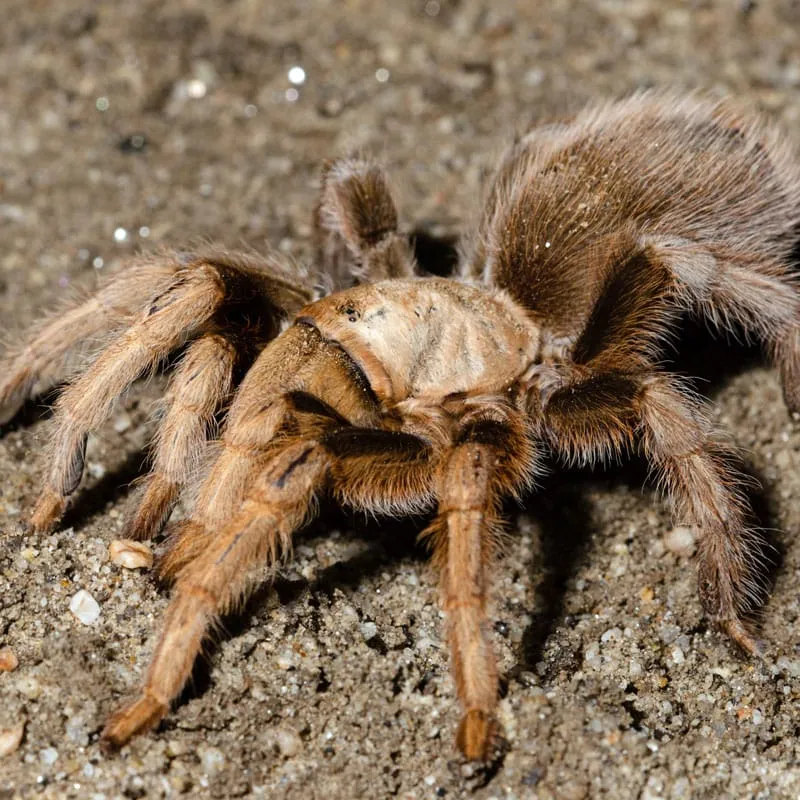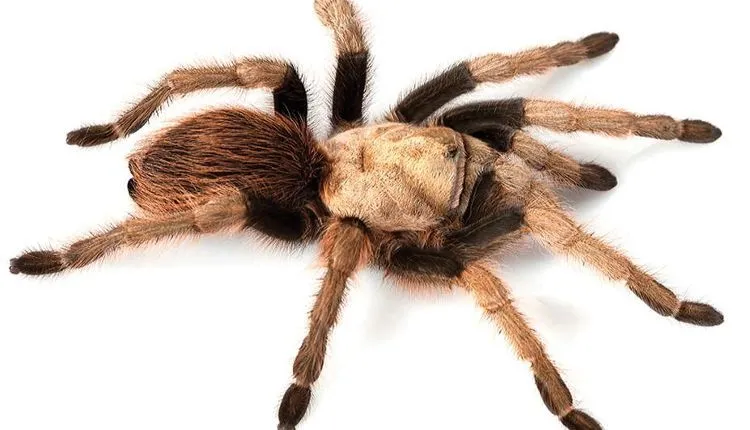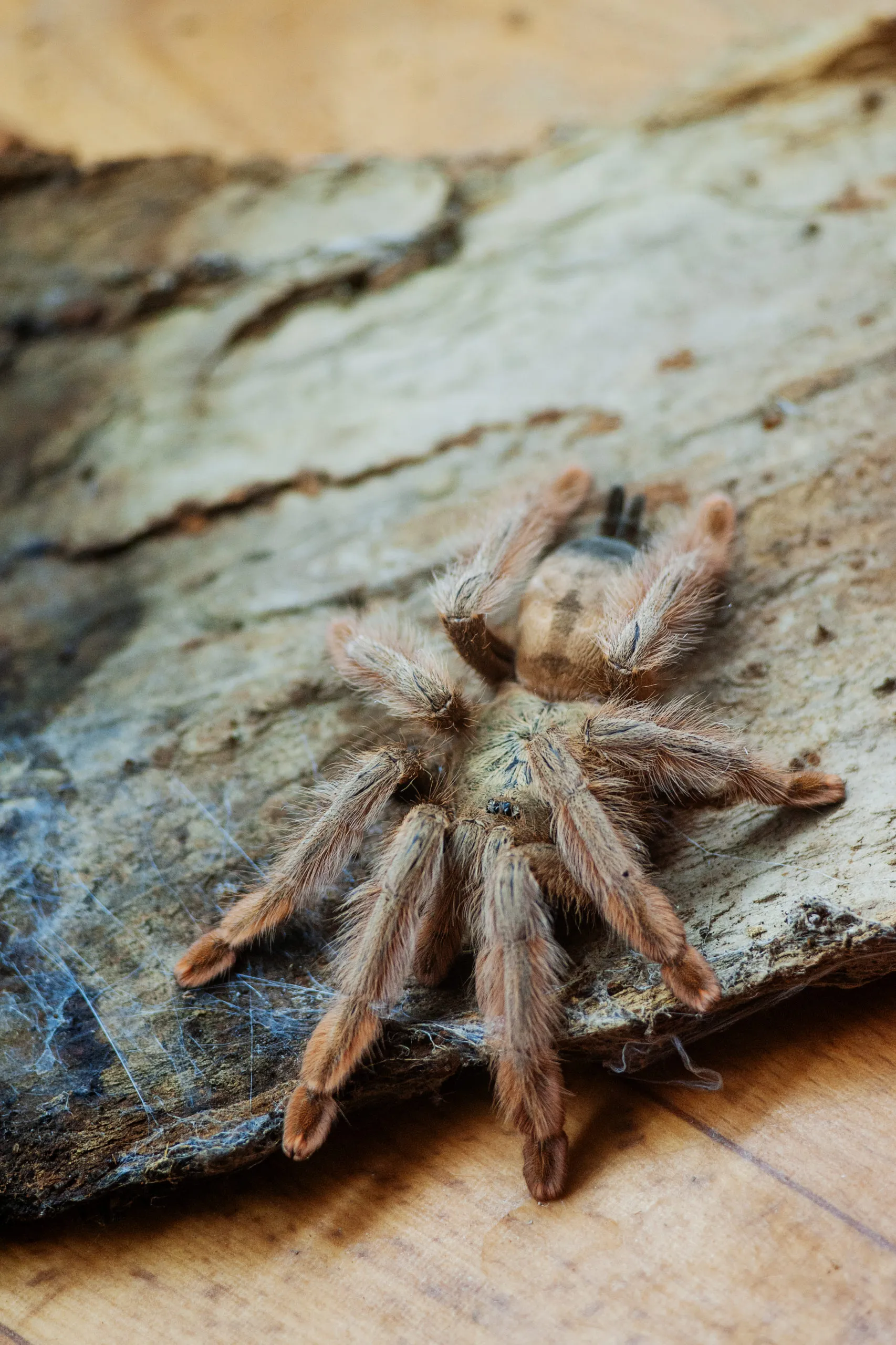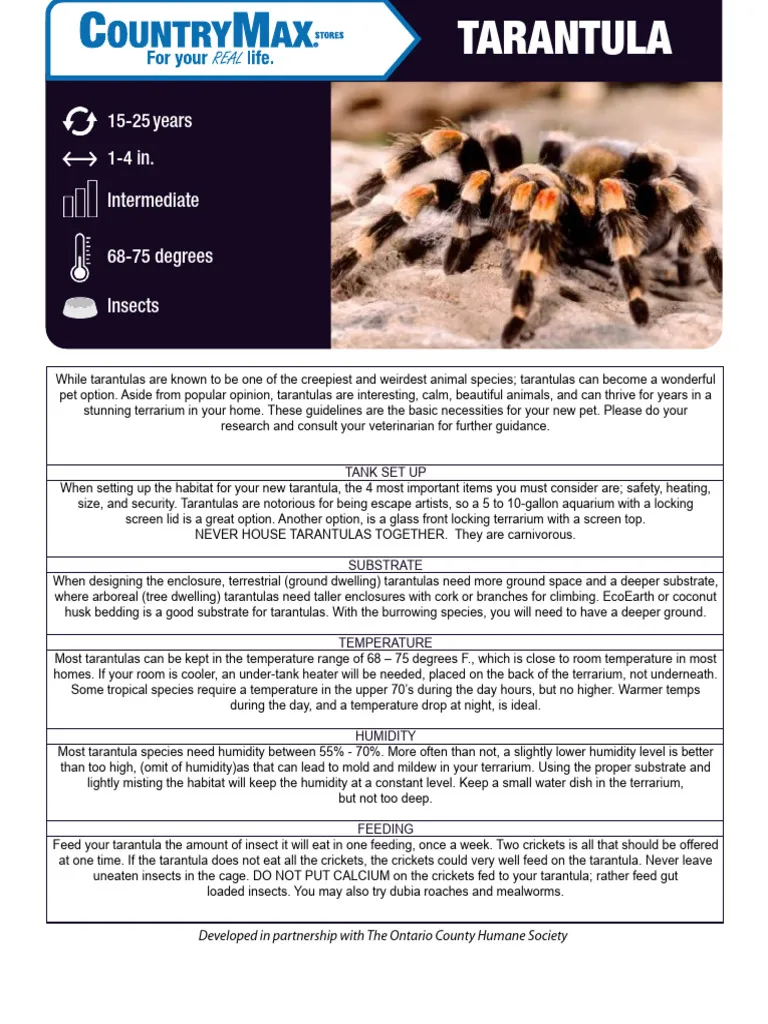Understanding Blonde Tarantulas
The Blonde Tarantula (also known as the Mexican Blonde Tarantula, Tliltocatl albopilosus) is a popular choice for beginner tarantula keepers due to its docile nature and relatively easy care requirements. Native to the tropical forests of Central America, these spiders are known for their striking appearance and manageable size. This guide will provide you with the essential knowledge to ensure your Blonde Tarantula thrives in a captive environment, covering everything from habitat setup to feeding and health maintenance. By understanding their needs, you can create a thriving environment for your eight-legged friend.
Origin and Natural Habitat
Blonde Tarantulas originate from the dry forests of Honduras, Costa Rica, and other parts of Central America. In their natural habitat, they are terrestrial spiders, meaning they live primarily on the ground. They often burrow in the soil or find shelter under rocks, logs, or in other natural crevices. Understanding their natural environment is key to replicating their needs in captivity. The climate in their native regions is typically warm and humid, with distinct wet and dry seasons, influencing their behaviors, such as molting and breeding.
Appearance and Characteristics

The Blonde Tarantula gets its name from the light brown or golden hairs that cover its body, providing a striking contrast to its darker legs. These spiders can reach a leg span of up to 6 inches, making them a medium-sized tarantula. They possess a relatively gentle temperament, making them less likely to bite than some other species, although, like all tarantulas, they can bite if provoked. They also have urticating hairs on their abdomen, which they can flick off as a defense mechanism. These hairs can cause skin irritation, so caution is needed when handling your spider. This is why proper blonde tarantula care is important.
Setting Up the Perfect Enclosure
Creating the right habitat is crucial for the health and well-being of your Blonde Tarantula. A well-designed enclosure will mimic their natural environment and provide them with a safe and comfortable space to thrive. The enclosure’s size, substrate, temperature, and humidity should all be carefully considered to ensure your tarantula feels safe and stress-free. Avoid overcrowding and ensure all elements are secure to prevent escapes or injury to your pet. A proper habitat setup is a cornerstone of successful Blonde Tarantula care.
Terrarium Size and Type
For an adult Blonde Tarantula, a terrarium that is at least 10 gallons in size is recommended. A larger enclosure, such as a 20-gallon long tank, provides more space for the spider to move around and establish a comfortable burrow. The enclosure should have a secure lid to prevent escapes. The type of enclosure can vary, but a glass or acrylic tank with good ventilation is ideal. Ensure that the ventilation is not excessive, as it can affect humidity levels. The tank should be easy to clean and provide a clear view of your tarantula.
Substrate and Decorations

The substrate is the bedding material that covers the bottom of the enclosure. For Blonde Tarantulas, a substrate that allows them to burrow is essential. A mixture of peat moss, coconut fiber (coir), and a small amount of vermiculite or sphagnum moss is ideal. This combination retains moisture well, aids in humidity control, and allows for burrowing. The substrate should be deep enough (around 4-6 inches) to allow the tarantula to create a burrow. Decorations can enhance the enclosure but avoid sharp or potentially harmful items. Provide a hide, such as a piece of cork bark or a half log, for the tarantula to retreat to. Live or artificial plants can add to the natural aesthetic, and a shallow water dish is essential for hydration.
Temperature and Humidity Control
Blonde Tarantulas thrive in a temperature range of 75-85°F (24-29°C). Maintain this temperature using a heat lamp or a heat pad placed on the side of the enclosure. Avoid placing the heat source directly under the tank, as this can dry out the substrate. Humidity levels should be kept between 65-75%. Monitor humidity using a hygrometer. To maintain humidity, mist the enclosure lightly with water every few days or as needed, ensuring that the substrate remains slightly moist but not waterlogged. Good ventilation is important to prevent the growth of mold and bacteria, so ensure the enclosure has adequate airflow.
Feeding Your Blonde Tarantula
Proper feeding is another core component of effective Blonde Tarantula care. A well-nourished tarantula is a healthy tarantula. Feeding your tarantula the right type of food, in the correct amounts, and with the appropriate frequency ensures they get all the nutrients they need to thrive. This includes a balanced diet and regular access to fresh water. Overfeeding can lead to health issues, so follow these guidelines to provide your tarantula with the best care possible.
Diet and Feeding Frequency

Blonde Tarantulas primarily feed on insects. Crickets, mealworms, and roaches are suitable choices. The size of the prey should be appropriate for the tarantula’s size; the insect should be no larger than the tarantula’s abdomen. Juvenile tarantulas should be fed 2-3 times a week, while adult tarantulas can be fed once a week or every other week. Remove any uneaten prey within 24 hours to prevent stress on the tarantula and to avoid the growth of mold or mites. Always gut-load the insects before feeding to provide the tarantula with better nutrition. Vitamin and calcium supplements are generally not necessary if your tarantula has a varied diet.
Water and Hydration
Provide a shallow water dish with fresh, clean water at all times. The dish should be small enough that the tarantula cannot drown in it. Change the water every few days to prevent the growth of bacteria and to keep it clean. Some tarantula keepers prefer to mist the enclosure instead of using a water dish, but a water dish is generally recommended. A well-hydrated tarantula will be more active and less prone to health problems. Ensuring proper hydration is a fundamental aspect of Blonde Tarantula care.
Handling and Safety Precautions
While Blonde Tarantulas are known for their relatively docile nature, handling should still be approached with caution. Tarantulas are delicate creatures, and mishandling can lead to injury for both the tarantula and the handler. Before you consider handling your tarantula, it’s important to understand its behavior and potential risks. It is always a good idea to keep your tarantula in a safe place and never let children handle them unsupervised. Remember that handling is generally not necessary for their well-being.
When to Handle Your Tarantula

Handling should be kept to a minimum, and only done when necessary. When handling, do so over a soft surface, such as a bed or a carpet, to minimize the risk of injury if the tarantula falls. Always be gentle and avoid sudden movements that might startle the tarantula. Never handle a tarantula after feeding or during a molt, as they are more vulnerable during these times. Frequent handling can cause stress and anxiety in your tarantula, so it is best to observe them in their habitat and respect their space.
Avoiding Bites and Reactions
Although Blonde Tarantulas are generally not aggressive, they can bite if they feel threatened. Avoid putting your hands in front of the tarantula. If a bite occurs, the venom is typically mild, comparable to a bee sting, but allergic reactions are possible. Always wash the bite area with soap and water. If you experience any severe symptoms, such as difficulty breathing or swelling, seek medical attention immediately. Another defense mechanism is the flicking of urticating hairs; these can cause significant skin irritation. Avoid touching your face or eyes after handling your tarantula, and wash your hands thoroughly. If you get the hairs on your skin, try to remove them using tape.
Health and Common Issues
Like any pet, Blonde Tarantulas can suffer from health issues. Being aware of common problems and recognizing the signs of illness can help you provide the necessary care and prevent serious health complications. Regular observation of your tarantula’s behavior, eating habits, and overall appearance is essential for early detection of any health issues. Knowing the normal molting process will also help you to differentiate between molting and illness.
Recognizing Signs of Illness

Watch for signs of illness, such as lethargy, loss of appetite, or unusual behavior. Other symptoms include loss of balance, tremors, or discharge from the mouth. A tarantula that is refusing to eat or is not eating its prey could be ill. If you notice any of these signs, consult an experienced tarantula keeper or a veterinarian who specializes in exotic pets. Ensure the enclosure is clean, the temperature and humidity are correct, and the tarantula has access to fresh water. Proper care can often prevent illnesses.
Molting Process
Molting is a natural process in which tarantulas shed their exoskeleton to grow. This process can take several hours or even days. During molting, the tarantula will typically lie on its back. It’s crucial not to disturb the tarantula during this vulnerable time. Increase the humidity slightly to aid the molting process, but do not mist directly on the tarantula. After molting, the tarantula will be soft and vulnerable; do not feed the tarantula for a week or two until its fangs have hardened. The molt should be left in the enclosure for the tarantula to consume any remaining nutrients.
Breeding and Reproduction
Breeding Blonde Tarantulas can be a fascinating undertaking, but it requires knowledge and careful planning. Breeding involves a series of steps, from sexing your tarantula to the care of the eggs. It is only recommended for experienced keepers as it can be a demanding process. Successfully breeding Blonde Tarantulas can also contribute to conservation efforts if done ethically.
Sexing Your Tarantula

Sexing a tarantula involves determining its gender. This is usually done by examining the molt. The presence of a spermatheca (a pouch-like structure used to store sperm) in the female indicates the sex. Males have a small slit on their abdomen. This can be done by looking at the underside of the molt using a magnifying glass. While this is the most reliable way, it can sometimes be difficult, especially for juveniles. Therefore, patience and experience is often required. Consulting with experienced keepers can be helpful.
Mating and Egg Sacs
Mating Blonde Tarantulas involves introducing a mature male to a receptive female. The male will typically drum on the substrate to attract the female. If the female is receptive, the mating process can occur. After mating, the female will produce an egg sac, which can contain hundreds of eggs. The egg sac must be carefully monitored, and the keeper must provide proper incubation conditions. The spiderlings will need to be raised in separate enclosures to prevent cannibalism. This is a complex process and requires advanced knowledge.
Final Thoughts
Caring for a Blonde Tarantula can be a rewarding experience. By following these 7 tips, you can ensure your tarantula lives a long and healthy life. Remember to research and learn as much as you can. Provide a suitable enclosure, appropriate food, and maintain proper temperature and humidity levels. Handle your tarantula with care and watch for any signs of illness. With proper care and attention, your Blonde Tarantula can be a fascinating and enjoyable pet for years to come. Enjoy the journey of tarantula keeping, and always prioritize the well-being of your eight-legged friend.
